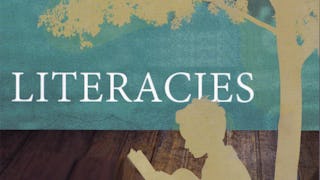If you are a researcher, academic, student, development sector professional or a practitioner who is keen to reach the research-based knowledge you have created to a wider audience, this course is for you.

Enjoy unlimited growth with a year of Coursera Plus for $199 (regularly $399). Save now.

Writing and Disseminating Grey Literature



Instructors: Rekha Raghunathan
3,161 already enrolled
Included with
What you'll learn
How to craft opinion pieces, data stories and photo narratives
How to use social media to reach your research work to a wider audience
How to edit your own work
Skills you'll gain
Details to know

Add to your LinkedIn profile
See how employees at top companies are mastering in-demand skills

There are 9 modules in this course
Hi, we are glad you’ve joined this course on writing and disseminating grey literature! There are nine modules, with six core modules and an assignment module, that have been designed to help you finish this course in six to eight weeks. In each of these modules, you will discover how you can draw from your research or practice/industry work to write public-facing content such as op-eds, data stories, photo narratives, and infographics. You will learn useful skills to help you develop your writing and editing skills, pitch your ideas successfully to media outlets, and use social media to disseminate your work better. This first introductory module serves as an orientation to what you can expect from this course and how you can best approach it. Take a few moments to meet the course instructors, your peers, and also to introduce yourself.
What's included
1 video3 readings1 discussion prompt1 plugin
This first module will give you an overview of what constitutes grey literature and introduce the different types of public pieces you could produce from your research. We will then take you through how you could go about structuring and outlining your arguments before you craft a public piece, and what you need to keep in mind when you pitch your work to a publication.
What's included
4 videos5 readings1 assignment3 discussion prompts
This module will focus on writing opinion pieces or op-eds – one type of public writing we had introduced in Week 1. We will first explain what an op-ed is and how it can be a useful resource for researchers and practitioners to communicate their work to a larger audience. We will then, in detail, cover how you can structure an op-ed and pitch it successfully, and how it varies from a piece of grey literature you may be more used to writing.
What's included
4 videos7 readings1 assignment2 discussion prompts
This module delves into another popular form of public writing – data stories. Discover what data stories are and how to build compelling narratives, choose relevant information and adapt your writing to suit this style. This module ends with an overview on how to create infographics to present data from your research.
What's included
5 videos5 readings1 assignment1 discussion prompt
This module will guide you to use the visual medium of a photo narrative to tell stories. You will learn how to identify when it's suitable to opt for this style of public writing, how to plan a narrative using photographs and how to use a smartphone to click photos while you’re out on the field.
What's included
8 videos4 readings3 discussion prompts
This module will build on the lessons covered in the previous ones. You will learn about social media and how you can use it effectively to widen the reach of your publications, find potential collaborators and connect with others working in areas of research related to yours. We will focus on Twitter and Instagram and how you can adapt your writing to suit these two platforms.
What's included
4 videos9 readings2 discussion prompts
The previous modules looked at how to outline, structure and build different types of public writing from scratch. To end this course, we will take you through the different stages of editing. You will learn why it’s important for you to edit your own work and how you can go about it in an organised step-by-step manner.
What's included
3 videos7 readings1 assignment1 discussion prompt
A chance to test yourself, and put what you've learned to work! The assignment requires you to select from amongst the three options, craft and submit your work which will be graded by your peers, and gives you the opportunity to participate in peer-learning by grading the work of your peers as well. All the best! Note that you are required to submit only one of the three options for your assignment. While you are welcome to attempt and submit more than one, the requirement for course completion is the successful completion of one assignment.
What's included
1 reading3 peer reviews
Well done on completing all the modules in this course – we hope you had an enriching learning journey!
What's included
1 video1 plugin
Instructors



Offered by
Explore more from Education
 Status: Preview
Status: PreviewErasmus University Rotterdam
 Status: Preview
Status: PreviewMichigan State University
 Status: Preview
Status: PreviewO.P. Jindal Global University
 Status: Preview
Status: PreviewUniversity of Illinois Urbana-Champaign
Why people choose Coursera for their career




Frequently asked questions
No - this course is applicable to researchers, academics, students and practitioners in any discipline of study, research or work. While many of the examples in the course are from the field of Social sciences, what you will learn and practice are applicable across a wide range of domains.
To access the course materials, assignments and to earn a Certificate, you will need to purchase the Certificate experience when you enroll in a course. You can try a Free Trial instead, or apply for Financial Aid. The course may offer 'Full Course, No Certificate' instead. This option lets you see all course materials, submit required assessments, and get a final grade. This also means that you will not be able to purchase a Certificate experience.
When you purchase a Certificate you get access to all course materials, including graded assignments. Upon completing the course, your electronic Certificate will be added to your Accomplishments page - from there, you can print your Certificate or add it to your LinkedIn profile.
More questions
Financial aid available,
¹ Some assignments in this course are AI-graded. For these assignments, your data will be used in accordance with Coursera's Privacy Notice.







